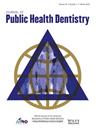Smoking is a major global health problem with serious systemic and oral consequences. This study aims at assessing the influence of smoking cigarettes and other types of smoked tobacco on oral conditions (OCs) using a representative sample of US adults.
Pre-pandemic data from the National Health and Nutrition Examination Survey 2017–2020 were utilized, and 7840 adults aged ≥30 years were included in our analyses. Descriptive statistics, logistic, and negative binomial regression models were performed to assess the relationship between tobacco products and OCs including, tooth loss (TL), coronal (CC) and root caries (RC).
Overall, 16.29% of our sample were current cigarette smokers (CCS). TL (17.25%) and untreated RC (28.26%) were more evident among CCS. In the adjusted regression models, smoking cigarettes was associated with RC (AOR: 3.20, 95% CI; 2.02, 5.09), untreated CC (IRR: 3.08, 95% CI: 1.50, 6.31), and TL (IRR: 2.18, 95% CI: 1.64, 2.88). Regarding the type of used tobacco product in the past 5 days, cigarettes were the most common type (15.03%). The adjusted model indicated that e-cigarette smokers had the highest odds of untreated RC (AOR: 5.17, 95% CI: 2.19, 12.23) and the highest rate of TL (IRR: 2.21, 95% CI: 1.45, 3.35). Further, cigar smokers had the highest rate of teeth with untreated CC (IRR: 3.25, 95% CI: 1.46, 7.25).
Using tobacco products is associated with poor OCs. Dentists, being the primary oral health care providers, can play a crucial role in counseling and supporting smokers to quit as part of their routine dental examination.


